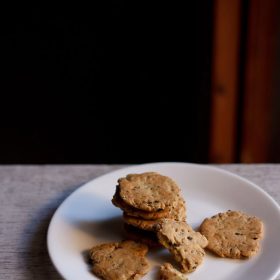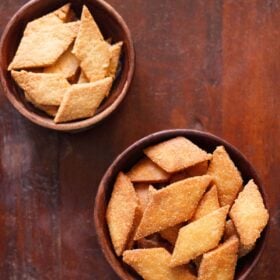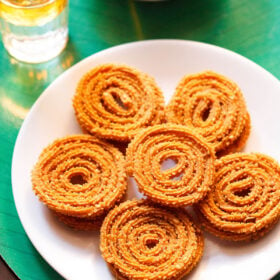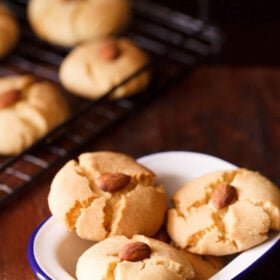Cornflakes Chivda Recipe | Makai Chivda
Next time you’re sitting with that bowl of cornflakes and milk for your breakfast, think more of what all you can do with cornflakes. And if you don’t really want to stress on your brain, here’s an easy-peasy, crunchy-munchy and scrumptious recipe of Cornflakes Chivda, that literally gets done within half an hour. Subtly spiced and nutty, this Makai Chivda recipe is vegan as well as naturally gluten free. Makes for a lovely Diwali snack, when you want to make something different than the usual.
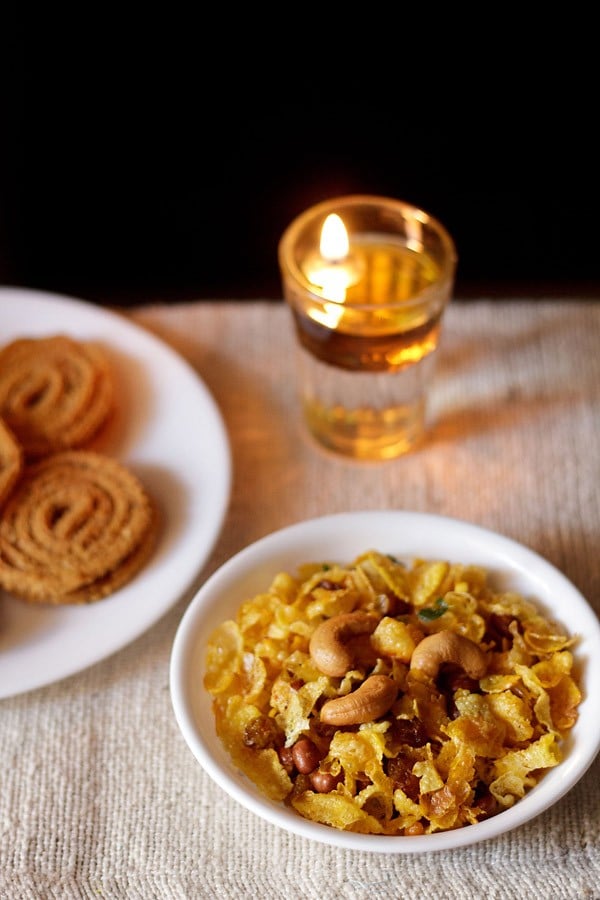

More on Cornflakes Chivda
There’s hardly anyone I know who doesn’t like cornflakes. Apart from people who might have an allergy towards it, cornflakes’ is one of those cereals which appeals people in all ages – from kids to adults alike. Same is the case with this Cornflakes Chivda. It is quite addictive. So, I’d say, make a large batch whenever you are preparing it as it can get over within hours!
Chivda is basically a Maharashtrian term for a deep-fried savory mixture, which consists many ingredients including spices and dry fruits. This recipe demonstrates the easiest way to make a Makai Chivda.
Something similar but without cornflakes, and in a South Indian style, is this Mixture Recipe. You must not miss trying this one too. Some of my personal favorites in this category of snacks include these recipes of Poha Chivda, Kara Boondi Mixture and the Panchkhadya.
For this Cornflakes Chivda, I have used the basic dried yellow-colored cornflakes, also known as corn poha or makai poha. These are deep-fried to make this chivda. You can get them easily from any Indian grocery shop or order online as well.
The cornflakes used for this Makai Chivda are not the ready to eat cereal cornflakes. However, you can even prepare this chivda with the ready to eat ones. In that case, you will have to lightly roast the cornflakes in a bit of oil. The dry fruits can also be roasted in some oil or even dry roasted.
The best way to enjoy this chivda made of cornflakes is as a plain snack. But it also tastes awesome, when paired with some chai.
Step-by-Step Guide
How to make Cornflakes Chivda
Frying ingredients
1. First measure, take all the ingredients and keep them in individual bowls or plates. Heat oil till its moderately hot in a kadai. Take about 1/3 cup of cornflakes in the sieve. Immerse the fine sieve ladle in the hot oil.
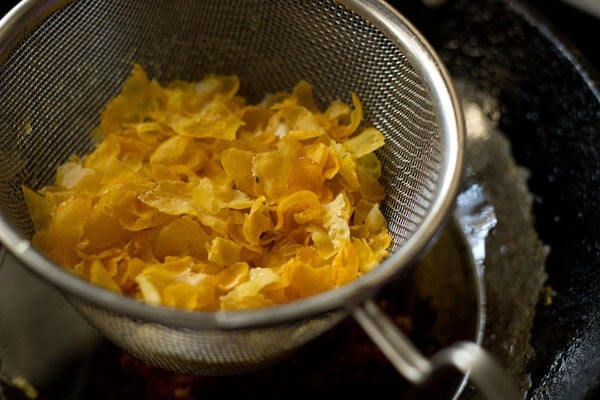

2. Fry the cornflakes, stirring with a spoon, till they expand, become golden and crisp. Don’t brown the cornflakes.
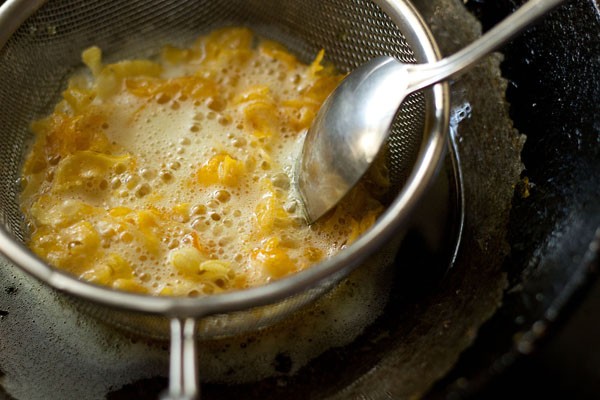

3. Shake the ladle to remove excess oil. Drain the cornflakes on a plate lined with kitchen paper towel. Fry the rest of the cornflakes in the same way.
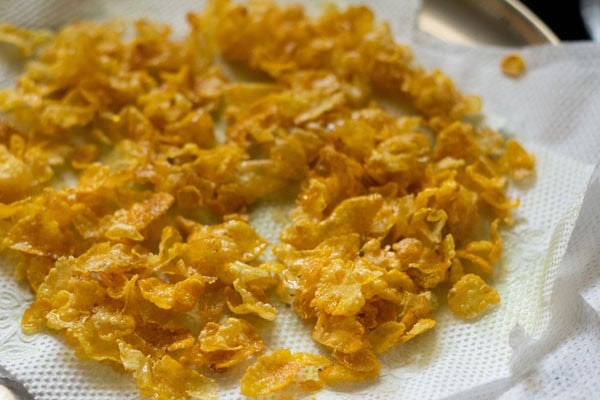

4. Add the peanuts to the sieve ladle.
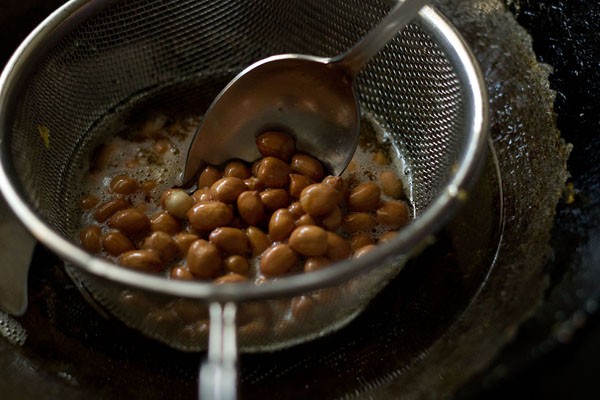

5. Fry them in the same way, stirring with a spoon, till they are crisp and crunchy.
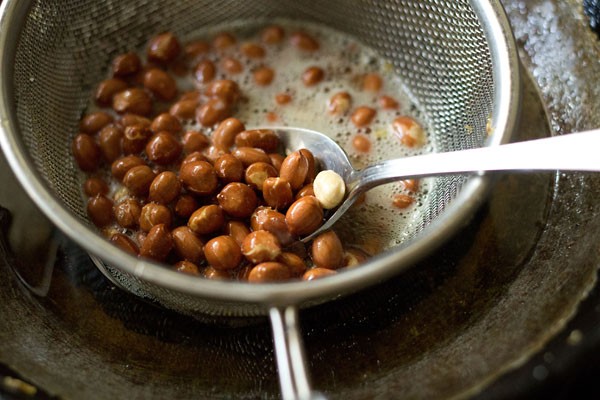

6. Remove and place the peanuts on the kitchen paper towel.
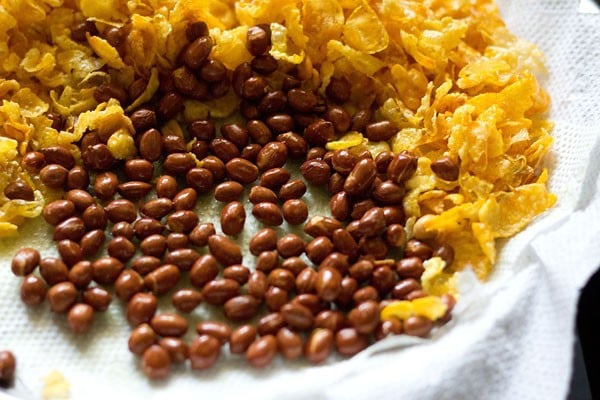

7. Now, add cashews to the to the sieve ladle.
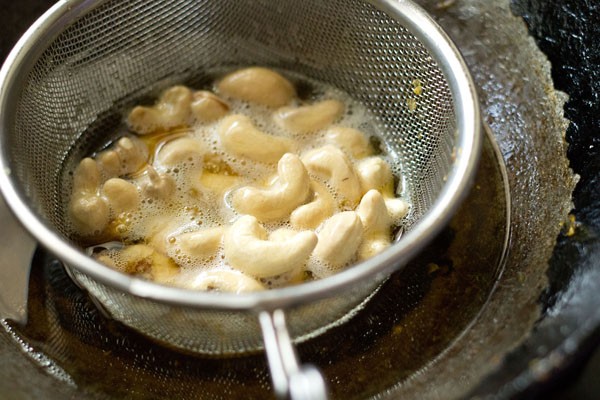

9. In a similar way, fry the cashews.
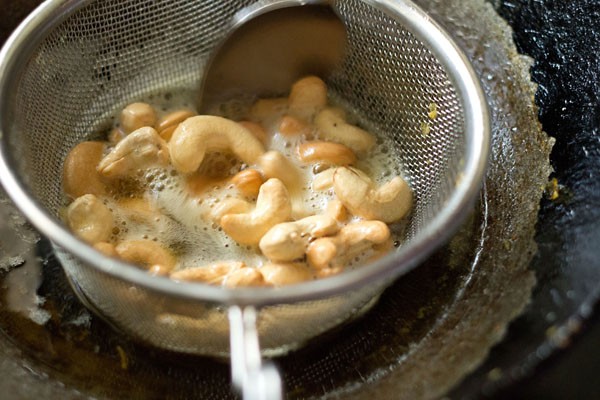

10. Just fry the cashews till golden. Avoid over browning.
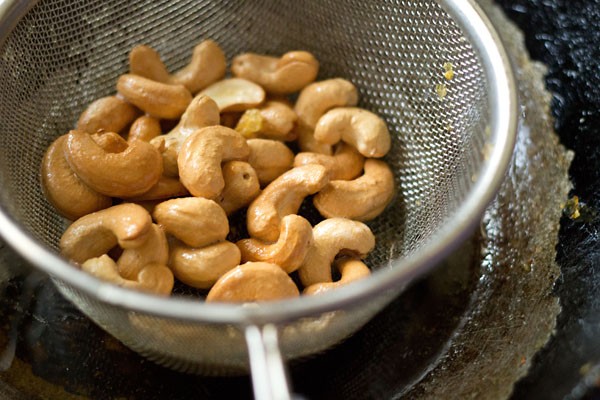

11. Remove and drain the cashews on the kitchen paper towel.
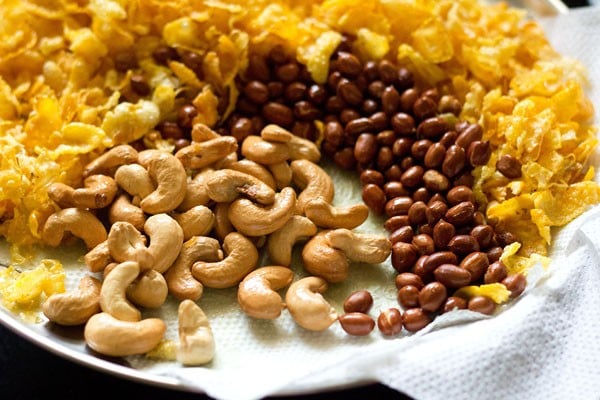

12. Next, add the raisins.
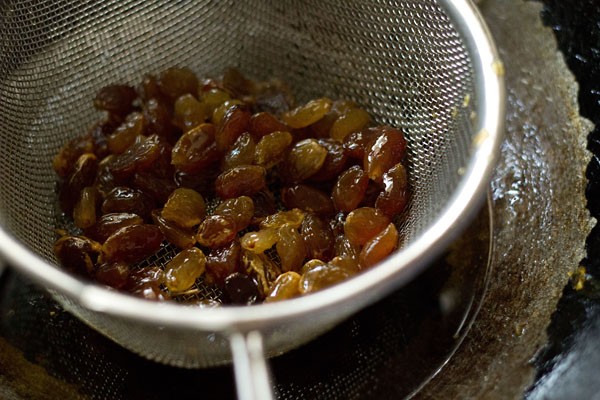

13. Fry till they swell and become plump. Don’t fry more, as they become dense and chewy.
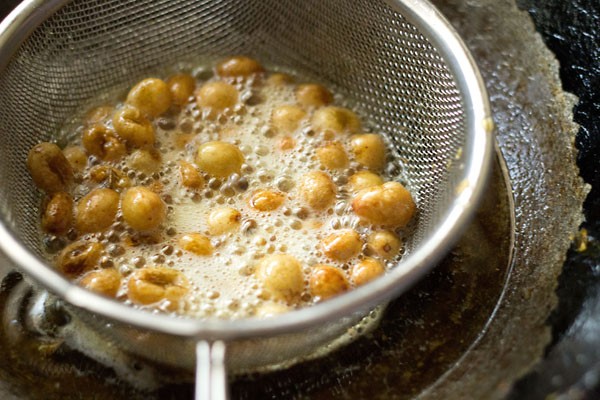

14. Drain the raisins too.
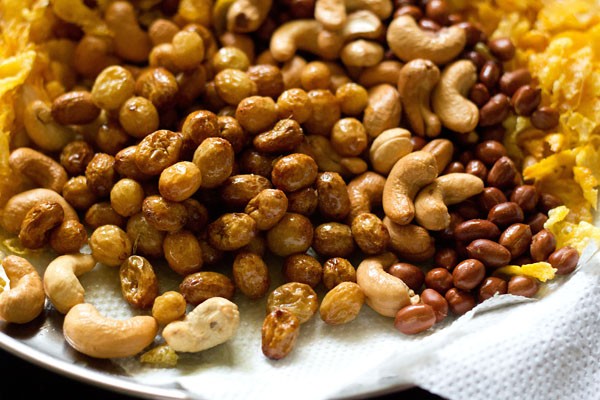

15. Fry the curry leaves for a few seconds. Then, place them too on the paper towel.
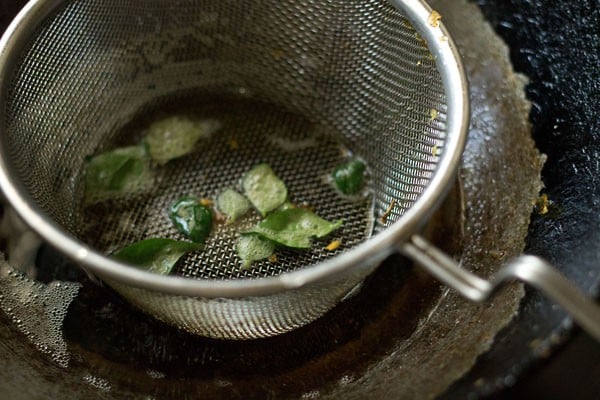

Making Cornflakes Chivda
16. When the mixture of fried ingredients is still hot, add ¼ teaspoon turmeric powder, ½ teaspoon red chili powder, ½ tablespoon powdered sugar and salt as per taste.
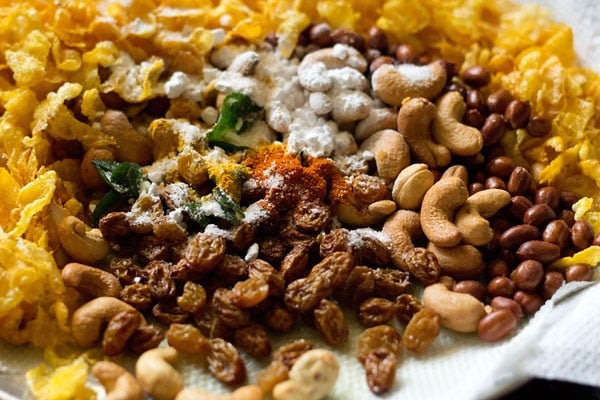

17. Mix the sugar, salt and spices very well with the rest of the ingredients with a spoon, taking care not to break the crisp cornflakes. Check the taste and add more salt or powdered sugar, if required.
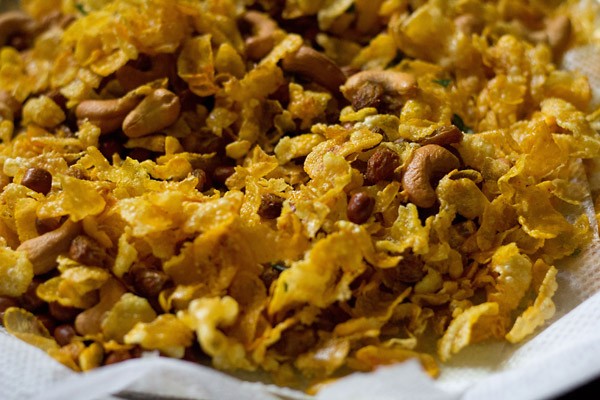

18. Once the Makai Chivda mixture cools, serve as a tea-time snack or store in an airtight container or jar.
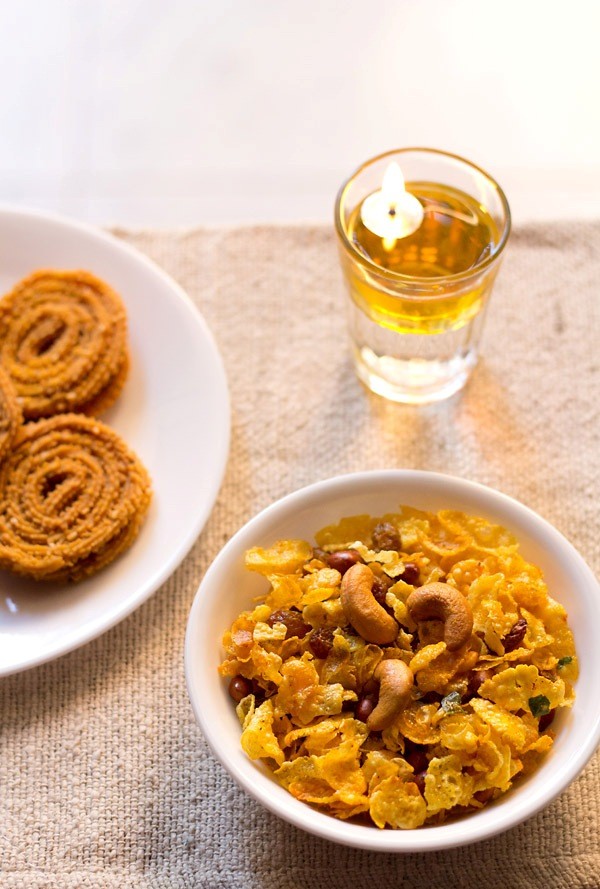

Cook with cornflakes
No doubt, the best way to bring a crunchy texture and some munch in your breakie cereal bowl is by using cornflakes. But if you thought that the use ends here, you’re highly mistakes. As cornflakes is definitely a versatile ingredient that has much importance in creating dishes and overall cooking as well.
So, when it comes to its usage, cornflakes are usually used in 2 forms – either just as it is, like in this Makai Chivda or in crushed form as used to coat or crumb fry various dishes like pakodas, fritters, etc. Sometimes crushed cornflakes may also be used in desserts to enhance the texture.
Other ways you can make use of cornflakes in an interesting way are that you can add to your puddings, custards, cookies and even make yummy mixtures to munch on as a quick snack. Apart from these, you can also jazz-up your cornflakes breakfast bowls and make them healthier by adding honey, fruits, nuts, seeds or dry fruits.
There are different varieties of cornflakes available in the market these days. In my opinion, the best one is the traditional, original one. Though, the flavored cornflakes can also be savored once a while. Once you open the pack, make sure to seal it in an air-tight box. Otherwise, it might turn soggy by losing its crispiness.
Expert Tips
- This Cornflakes Chivda is a sweet and savory snack. You can change the spice quantities as per your likings.
- Whenever making chivda with poha, cornflakes or grated potatoes, make sure to use a fine sieve ladle to fry these. You get this sieve with a handle easily in Indian markets. These are very helpful for frying ingredients with small flakes or pieces. This equipment literally makes the frying process as easy as breeze. You also won’t have to waste time and efforts to find out the bits of cornflakes in the oil.
- It is best to keep the ingredients ready as the cooking procedure does require a bit of planning.
- The sieve ladle and the ingredients should be dry. You will be frying each ingredient one after the other, so the prep work helps and is efficient too.
- Also, keep a large tray or 2 to 3 plates/bowls lined with kitchen paper towels, so that you can place the fried ingredients on them to soak excess oil.
More Diwali Snacks Recipes To Try!
Evening Snacks
Evening Snacks
Evening Snacks
Please be sure to rate the recipe in the recipe card or leave a comment below if you have made it. For more vegetarian inspirations, Sign Up for my emails or follow me on Instagram, Youtube, Facebook, Pinterest or Twitter.
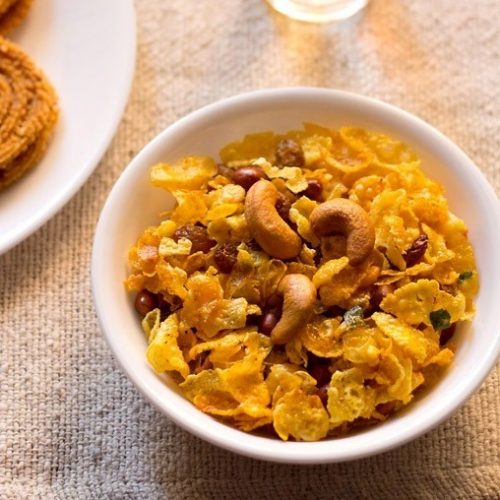

Cornflakes Chivda | Cornflakes Mixture
Cornflakes chivda is a crisp, crunchy, sweet & savory fried mixture made with corn flakes, dry fruits and spices.
Prep Time 5 minutes
Cook Time 20 minutes
Total Time 25 minutes
Prevent your screen from going dark while making the recipe
preparation for cornflakes chivda
frying cornflakes chivda ingredients
Take about 1/3 cup of the corn flakes in the sieve. Immerse the fine sieve ladle in the hot oil.
Fry the cornflakes, stirring with a spoon, till they expand, become golden & crisp. Don’t brown the corn flakes.
Shake the ladle to remove excell oil. Drain the corn flakes on a plate lined with kitchen paper towel. Fry the rest of the corn flakes in the same way.
Add the peanuts to the sieve ladle
Fry them in the same way, stirring with a spoon, till they are crisp and crunchy.
Remove and place the peanuts on the kitchen paper towel.
Now add cashews to the to the sieve ladle.
In a similar way, fry the cashews till golden.
Remove and drain the cashews on the kitchen paper towel.
If using roasted chana dal, then fry too them this way.
Next add the raisins. Fry them till they become plump & swell. Don’t fry more as they become dense and chewy.
Drain the raisins too. Fry the curry leaves for a few seconds. Then place them too on the paper towel.
making cornflakes chivda
When the mixture is still hot, add turmeric powder, red chili powder, powdered sugar and salt. Stir well.
Mix the powdered sugar, salt and spices very well with the rest of the ingredients with a spoon, taking care not to break the crisp corn flakes. Check the taste and add more of the salt or powdered sugar if required.
Once the cornflakes chivda mixture is cooled, then store in an airtight container or jar.
Serve cornflakes mixture whenever required as a tea time snack.
- This recipe can be scaled easily.
This Cornflakes Chivda Recipe from the archives was first published in February 2014. It has been updated and republished in March 2024.
[ad_2]


